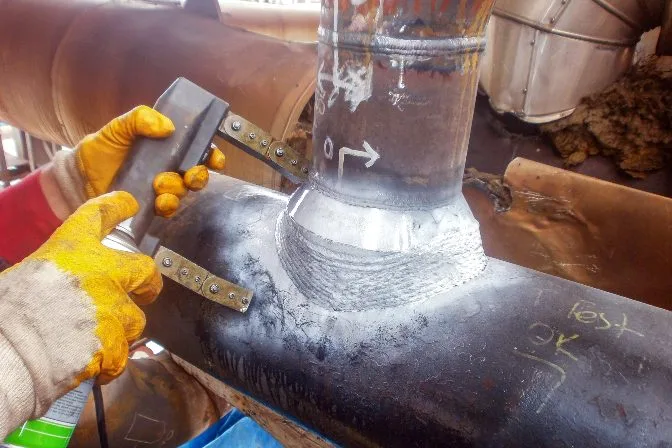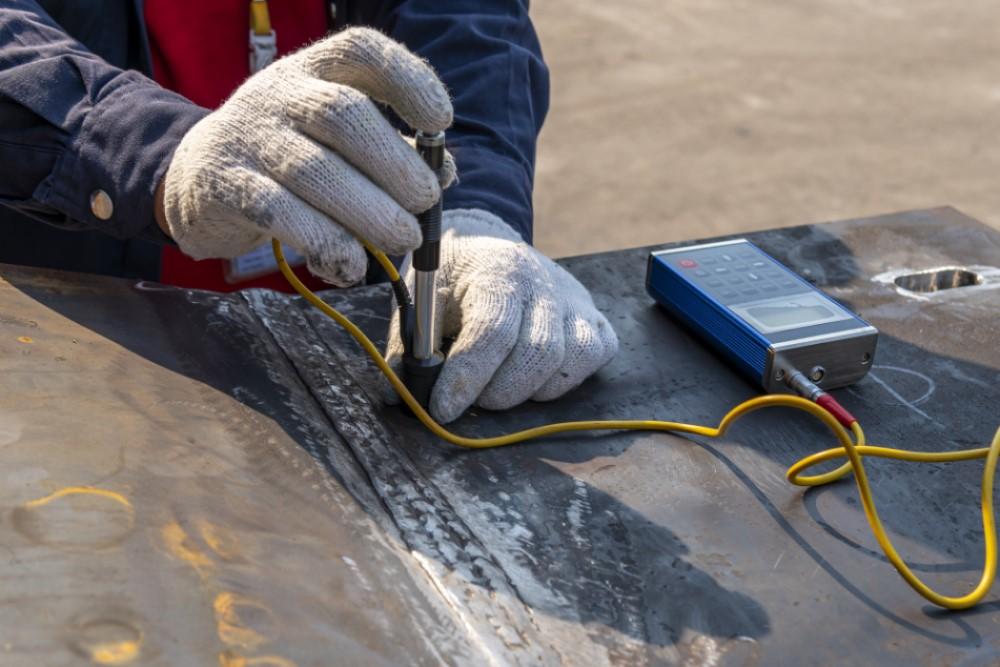Extensive Houston Welding Inspection for Enhanced Efficiency and Sturdiness
Exactly How Welding Evaluation Functions: A Thorough Analysis of Approaches, Standard, and the Role of Inspectors in Making Sure Structural Integrity and Safety
Welding assessment is a vital part in the construction and manufacturing markets, where the stability of bonded joints is extremely important to safety and reliability. Various methods, including visual and non-destructive testing techniques, are utilized to discover possible flaws that might compromise architectural performance - Houston Welding Inspection. Examiners are entrusted with not only assessing weld high quality against strict standards however additionally analyzing intricate codes and criteria. As we check out the complexities of this occupation, the obstacles dealt with by inspectors in maintaining security and compliance will certainly expose a deeper understanding of their important function in safeguarding facilities.
Importance of Welding Examination
Welding inspection is crucial in guaranteeing the honesty and safety of welded frameworks, with studies showing that approximately 70% of structural failures can be mapped back to inadequate welding practices. This underscores the importance of organized evaluation procedures throughout the welding lifecycle, from preparation to conclusion. Efficient assessment not just determines defects prior to they intensify right into substantial issues but likewise guarantees conformity with sector criteria and policies.

The role of welding examiners prolongs past plain top quality control; they are crucial in guarding public security and lessening responsibility for organizations. By carrying out strenuous evaluation methods, companies can spot issues such as insufficient blend, cracks, or too much porosity, which can jeopardize the general toughness of a bonded joint. Recurring training and certification of examiners contribute to the overall high quality guarantee in welding operations, fostering a society of security and excellence.
In enhancement, welding assessment plays a critical role in keeping operational effectiveness. Determining issues early at the same time promotes prompt restorative actions, lowering costly rework and task delays. Ultimately, a durable assessment framework serves as a structure for reliable and long lasting welded frameworks, guaranteeing they satisfy both practical and safety requirements.
Common Assessment Approaches
How can one ensure the quality of welded joints throughout the examination process? The execution of various inspection techniques is essential in assessing weld stability and determining prospective defects. Typical approaches include Visual Evaluation (VT), which is usually the very first line of defense, permitting inspectors to discover surface area flaws such as fractures, porosity, or insufficient fusion by aesthetically assessing the welds.
Ultrasonic Evaluating (UT) is another widely utilized method, employing high-frequency acoustic waves to recognize internal flaws within the weld. This method is particularly reliable for finding issues that are not visible to the nude eye. Radiographic Evaluating (RT) uses X-rays or gamma rays to create pictures of the weld, making it possible for the recognition of volumetric issues, such as additions or spaces.
Magnetic Particle Evaluating (MT) and Fluid Penetrant Testing (PT) are likewise noticeable approaches, concentrating on surface area defects. MT depends on magnetic areas to disclose surface and near-surface suspensions, while PT includes using a liquid color to highlight flaws. Each of these approaches offers an unique function, ensuring the thorough analysis of welded joints and safeguarding architectural integrity and safety.
Standards for Evaluating Welds
The analysis of welds is guided by a collection of recognized requirements that make sure both capability and safety in bonded frameworks. These requirements incorporate various elements, including weld dimension, profile, and infiltration, which must comply with defined requirements. Conformity with sector codes, such as those set by the American Welding Culture (AWS) or the American Culture of Mechanical Engineers (ASME), is vital in figuring out the acceptability of a weld.

Weld metallurgy plays a vital role; the assessment thinks about the blend top quality between base and filler materials, along with heat-affected areas. Lastly, the overall mechanical buildings, consisting of tensile stamina and ductility, must meet the needs developed for the details application. Collectively, these criteria guarantee that welds not only fulfill aesthetic requirements but likewise do accurately under functional conditions.
Function of Welding Inspectors
A welding examiner's proficiency is pivotal in making certain the stability and high quality of bonded structures. These experts play a vital role in the construction and building and construction process by confirming that welding operations follow established specifications and requirements. Their duties incorporate a comprehensive variety of jobs, consisting of visual evaluation of welds, examining welding documents, and carrying out non-destructive screening (NDT) approaches such as ultrasonic or radiographic screening to determine defects.
Welding inspectors are also in charge of analyzing welding codes and criteria, making sure that the welders are qualified these details which the products made use of fulfill the necessary requirements - Houston Welding Inspection. They must preserve meticulous documents of inspections, which act as documentation of compliance and quality control. Furthermore, these inspectors usually collaborate with engineers and project managers to deal with any kind of issues that arise throughout the welding process, supplying recommendations for restorative actions when essential.
Along with technical abilities, reliable communication is essential, as welding inspectors should communicate findings plainly to stakeholders and facilitate training and advice for welders. Ultimately, their role is integral to keeping safety and dependability in bonded frameworks, contributing considerably to the general success of building and construction jobs.

Obstacles in Welding Assessment
What obstacles do welding assessors encounter in their important function? The complexities of modern-day welding strategies and products present substantial difficulties for inspectors charged with ensuring compliance with safety and security standards and architectural integrity. One primary barrier is the rapid innovation of welding technology; examiners must constantly upgrade their knowledge and skills to stay efficient. This ongoing education and learning is vital to recognizing new products and procedures, which can differ extensively advice in qualities and demands.
In addition, assessors often come across variations in worksite problems that can prevent inspection processes. Variables such as ecological problems, access, and the physical state of the welded structures can make complex extensive assessments. Time restrictions enforced by job routines can better pressure inspectors, potentially impacting the thoroughness of their evaluations.
In addition, the subjective nature of some inspection approaches can bring about inconsistencies in examinations. As an example, visual inspections may differ based on the examiner's experience and perspective. To reduce these difficulties, the adoption of sophisticated non-destructive screening strategies and standard protocols becomes essential - Houston Welding Inspection. Inevitably, getting rid of these challenges is crucial for making certain the safety and security and check here dependability of welded frameworks across numerous sectors.
Verdict
Welding examination is vital for keeping structural integrity and safety in numerous markets. Inevitably, reliable welding inspection adds considerably to mitigating threats and boosting the overall integrity of bonded structures.
Welding evaluation is a crucial part in the building and production sectors, where the stability of welded joints is extremely important to safety and reliability.Welding evaluation is vital in making certain the stability and security of welded frameworks, with researches suggesting that up to 70% of structural failures can be mapped back to inadequate welding methods. Their responsibilities incorporate a detailed array of tasks, consisting of visual examination of welds, examining welding documentation, and conducting non-destructive testing (NDT) approaches such as ultrasonic or radiographic screening to recognize issues.
Welding examiners are also liable for analyzing welding codes and standards, ensuring that the welders are qualified and that the products made use of satisfy the necessary requirements. Inevitably, reliable welding evaluation adds dramatically to mitigating dangers and improving the general integrity of welded structures.